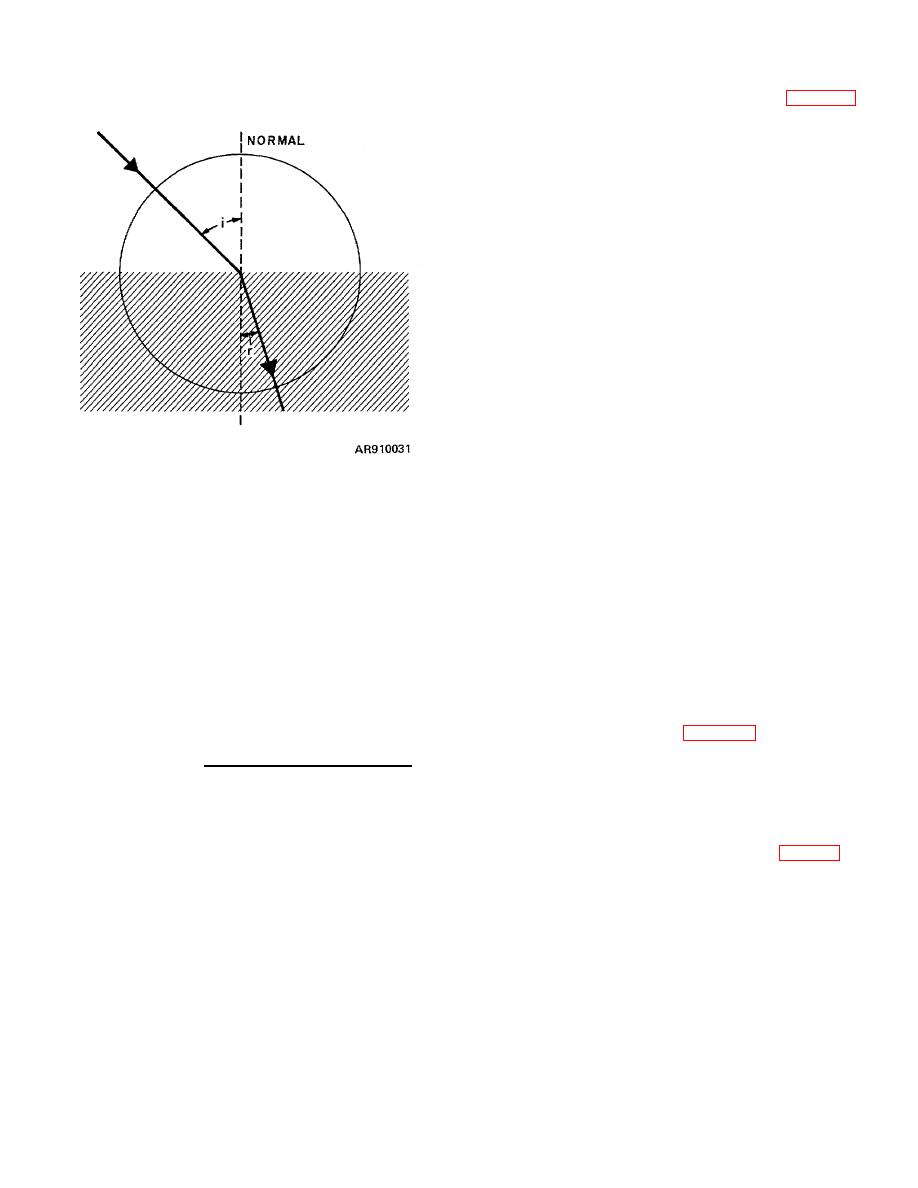 |
|||
|
|
|||
|
Page Title:
Figure 2-25. Index of Refraction. |
|
||
| ||||||||||
|
|
 TM 9-258
determined from the equation of Snell's law (para 2-11e)
by actually measuring the angles i and r in a simple
experiment, inasmuch as air can be used instead of
vacuum for all practical purposes.
c. The following listing contains the indices of
refraction of a number of substances.
NOTE
For most computations, the index of air
is considered to be unity (1.000). The
error introduced equals approximately
0.03 percent.
Vacuum .................................................... 1.000000
Air ............................................................. 1.000292
Water .............................................................. 1.333
Boro-silicate crown glass ................................ 1.517
Thermosetting cement .................................... 1.529
Thermoplastic cement
(Canada balsam) ..................................... 1.530
Gelatin ............................................................ 1.530
Light flint glass ................................................ 1.588
Medium flint glass ........................................... 1.617
Figure 2-25. Index of Refraction.
Dense flint glass ............................................. 1.649
Densest flint glass .......................................... 1.963
2-12. Index of Refraction.
2-13. Atmospheric Refraction
a. Light travels through substances of different
a. At a surface separating two media of different
optical densities with greatly varying velocities. For
indices of refraction, the direction of the path of light
example, the speed of light in air is approximately 186,
changes abruptly when passing through the surface. If
000 miles per second; in ordinary glass, it is
the index of refraction of a single medium changes
approximately 120, 000 miles per second.
gradually as the light proceeds from point to point, the
b. The ratio between the speed of light in vacuum
path of the light will also change gradually and will be
and the speed of light in a medium is known as the index
curved rather than in a straight line.
of refraction. The index of refraction is usually indicated
b. Although air at its densest has a refractive index
by letter n and is determined by dividing the speed of
on only 1.000292, this is sufficient to bend light rays from
light in a vacuum by the speed of light in the particular
the sun toward the earth when these rays strike the
medium.
atmosphere at an angle (fig 2-26).
The earth's
Velocity in Vacuum
atmosphere is a medium which becomes denser toward
Index of Refraction =
the surface of the earth. The result is that of light
Velocity in Medium
traveling through the atmosphere toward the earth at an
The index of refraction n, of a substance, can be
angle does not travel in a straight line but is refracted
and follows a curved path. From points near the horizon,
the bending of light is so great that the setting sun in
seen after it is completely below the horizon (fig 2-27).
2-18
|
|
Privacy Statement - Press Release - Copyright Information. - Contact Us |